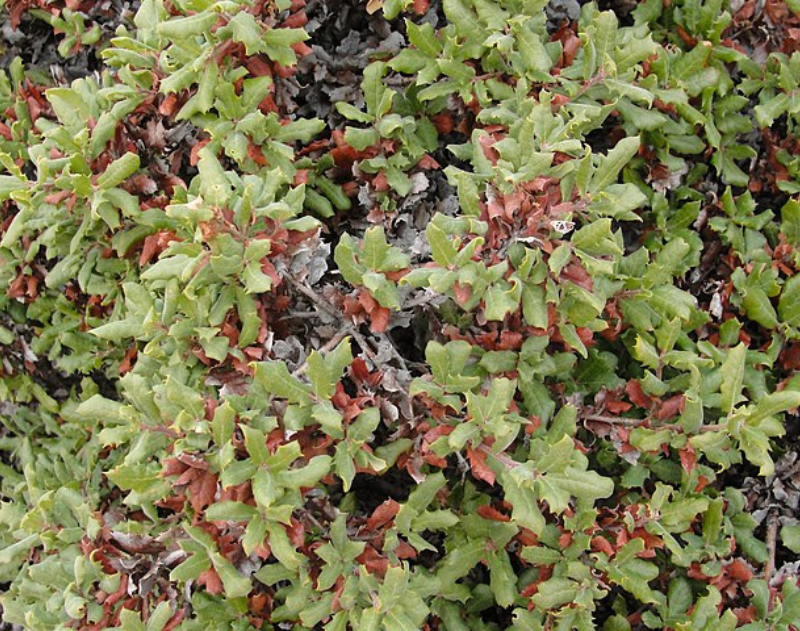
Quercus Durata and Planting: A Comprehensive Guide
Introduction
Quercus Durata, commonly known as the leather oak, is a remarkable tree species native to California. Its unique characteristics and ecological significance make it an excellent choice for planting in various landscapes. In this article, we’ll delve into the world of Quercus Durata, exploring its features, benefits, and the essential steps for successful planting.
The Remarkable Quercus Durata
Quercus Durata is a botanical wonder that hails from California. This evergreen tree is well-known for its distinctive leathery leaves, which are quite different from the typical oak leaves you might imagine. These leathery leaves are perfectly adapted to thrive in arid conditions, making Quercus Durata an invaluable addition to any landscape, particularly in regions with water scarcity.
Drought Resistance and Adaptability
One of the most exceptional features of Quercus Durata is its remarkable drought resistance. This quality allows it to flourish even in areas with limited water resources, making it a sustainable and eco-friendly choice for both urban and rural landscapes. By planting Quercus Durata, you can conserve water and still enjoy the beauty of an oak tree.
Wildlife Habitat and Biodiversity
Quercus Durata plays a significant role in supporting local ecosystems. Its acorns, which are produced in abundance, serve as a vital food source for various wildlife species. Birds, squirrels, and even deer are attracted to the nutritious acorns, creating a thriving microcosm of biodiversity around the tree. By planting Quercus Durata, you’re not only enhancing the aesthetics of your surroundings but also contributing to the well-being of local wildlife.
Aesthetic Appeal and Landscape Design
The aesthetic qualities of Quercus Durata are equally impressive. Its leathery leaves, which remain green throughout the year, provide a unique texture that adds visual interest to any landscape. The rough and furrowed bark of the tree further enhances its visual appeal, making it an excellent choice for homeowners and landscape architects alike.
Planting Quercus Durata: A Step-by-Step Guide
To ensure the successful growth of Quercus Durata in your landscape, it’s essential to follow specific planting and care guidelines. Here’s a more detailed look at each step:
1. Site Selection
Selecting the right location is crucial. Choose a spot that receives full sunlight to support healthy growth. Quercus Durata thrives in well-draining soil, so make sure the chosen site has good drainage.
2. Soil Preparation
Before planting, prepare the soil by incorporating organic matter. This helps improve both drainage and fertility. It’s essential to provide the tree with a nutrient-rich environment to establish strong roots.
3. Planting Depth
When planting your Quercus Durata sapling, ensure that you place it at the same depth it was in the nursery container. Proper planting depth is essential for the tree’s stability and growth.
4. Watering
During the tree’s initial establishment phase, it requires regular watering. Ensure that the soil remains consistently moist, especially during the first year after planting. However, avoid overwatering, as Quercus Durata prefers well-drained soil.
5. Mulching
Applying a layer of organic mulch around the base of the tree helps retain moisture, suppress weeds, and regulate soil temperature. It also contributes to the tree’s overall health and appearance.
6. Pruning
Pruning Quercus Durata should be done judiciously. Remove dead or diseased branches to maintain the tree’s health, but avoid excessive pruning, which can stress the tree. The goal is to preserve its natural shape and structure.
7. Pest and Disease Control
Keep an eye on your Quercus Durata for signs of pests or diseases. Early detection is key to preventing any issues from escalating. Consult with a local arborist or nursery for guidance on pest and disease control measures specific to your region.
Conclusion
In conclusion, Quercus Durata, the leather oak, is a remarkable tree with numerous benefits for your landscape and the environment. By planting and nurturing this unique species, you not only contribute to a more sustainable ecosystem but also enhance the aesthetic appeal of your surroundings. Follow the planting guidelines provided in this article to ensure the successful growth of Quercus Durata in your landscape, and enjoy the myriad advantages it brings.
FAQs (Frequently Asked Questions)
1. Is Quercus Durata suitable for urban landscapes?
Absolutely! Quercus Durata’s compact size, drought resistance, and unique aesthetics make it an excellent choice for urban landscapes.
2. How fast does Quercus Durata grow?
Quercus Durata typically has a moderate growth rate, with maturity reached in 10-20 years, depending on environmental factors.
3. What wildlife species are attracted to Quercus Durata?
Quercus Durata attracts a variety of wildlife, including birds, squirrels, and deer, thanks to its abundant acorns.
4. Can Quercus Durata adapt to clay soil?
While Quercus Durata prefers well-draining soil, it can adapt to clay soil with proper soil preparation and care.
5. Are there any specific pruning techniques for Quercus Durata?
Prune Quercus Durata sparingly, focusing on removing dead or diseased branches while maintaining its natural shape. Avoid excessive pruning, as it can stress the tree.